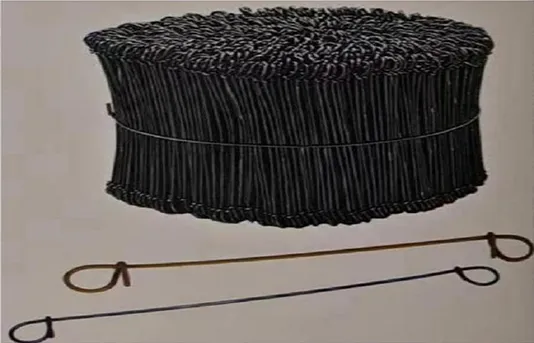-
 Phone:
Phone: -
 Email:
Email:

what is baling wire used for
What is Baling Wire Used For?
Baling wire is an essential component in various industries, primarily used for bundling and securing bales of materials such as hay, cotton, and recycled paper. Its significance extends beyond just agriculture and manufacturing; it plays a pivotal role in waste management, recycling, and transportation. In this article, we will explore the various uses of baling wire, its types, and why it is an indispensable tool in many sectors.
Baling wire is typically made of steel and comes in different gauges, thicknesses, and finishes, allowing for flexibility depending on the specific application. The wire can be galvanized for extra durability to resist rust and wear or left untreated for situations where corrosion is not a concern. The choice of baling wire type generally depends on the material being baled and the environmental conditions in which it will be used.
Agriculture
One of the primary uses of baling wire is in agriculture, particularly in the handling of hay and straw. Farmers use baling wire to tie bales tightly, ensuring that they remain compact during storage and transport. If the bales are not secured properly, the contents can become loose and degrade in quality due to moisture and exposure to the elements. Baling wire is crucial in this context, as it allows farmers to maximize storage space and maintain the integrity of their harvests. Additionally, baling wire is employed in securing other agricultural products, such as cotton bales, making it a versatile tool within the farming industry.
Recycling and Waste Management
In the recycling sector, baling wire plays a vital role in compacting recyclable materials, such as paper, cardboard, plastics, and metals. Baling these materials into manageable sizes not only makes handling easier but also enhances the efficiency of transportation and storage. When recyclables are tightly bound using baling wire, it creates a uniform size and density, allowing for more effective processing at recycling facilities. The entire recycling operation benefits greatly from the use of baling wire, as it promotes sustainability by ensuring that recyclable materials are collected, processed, and ultimately reused.
what is baling wire used for

Baling wire is also essential in the waste management industry, particularly for municipal solid waste and industrial scrap. Waste management companies use baling wire to compact waste into bales that can be easily transported to landfills or processing centers. By reducing the volume of waste, they save on transportation costs and improve operational efficiency. The ability to bundle waste securely means fewer trips are required, leading to lower fuel consumption and a smaller carbon footprint.
Transportation and Logistics
In the transportation and logistics sector, baling wire is used to secure various cargo, ensuring that goods remain intact during transit. It is particularly useful for binding items that can shift or move around, which could potentially cause damage. Baling wire is often used in conjunction with other securing methods such as straps, tarps, or shrink wrap to create a more secure load. This practice is especially important for industries that deal with bulk materials or irregularly shaped items.
Construction and Industrial Applications
Beyond agriculture and recycling, baling wire finds its applications in construction and other industrial settings. It can be used to bundle rebar, metal pieces, and construction debris, facilitating easier handling on job sites. Its strength and versatility make it a reliable choice for temporary bindings, tie-downs, and other securing tasks in various construction activities.
Conclusion
In summary, baling wire is a multifaceted tool that serves a critical function in numerous industries, including agriculture, recycling, waste management, transportation, and construction. Its ability to securely bind and compact materials offers significant advantages in terms of efficiency and cost-effectiveness. As industries continue to evolve and emphasize sustainability, the use of baling wire will remain integral in supporting these efforts, making it an indispensable resource in modern operations. Whether in tying hay bales, securing recyclables, or facilitating construction projects, baling wire proves itself to be an essential component in our economic and ecological landscapes.
-
Wire Mesh for Every Need: A Practical SolutionNewsJul.25,2025
-
Steel Fences: Durable, Secure, and Stylish OptionsNewsJul.25,2025
-
Roll Top Fencing: A Smart Solution for Safety and SecurityNewsJul.25,2025
-
Cattle Farm Fencing Solutions for Maximum SecurityNewsJul.25,2025
-
Affordable Iron Binding Wire SolutionsNewsJul.25,2025
-
Affordable Galvanized Wire SolutionsNewsJul.25,2025
-
Wire Hanger Recycling IdeasNewsJul.25,2025








